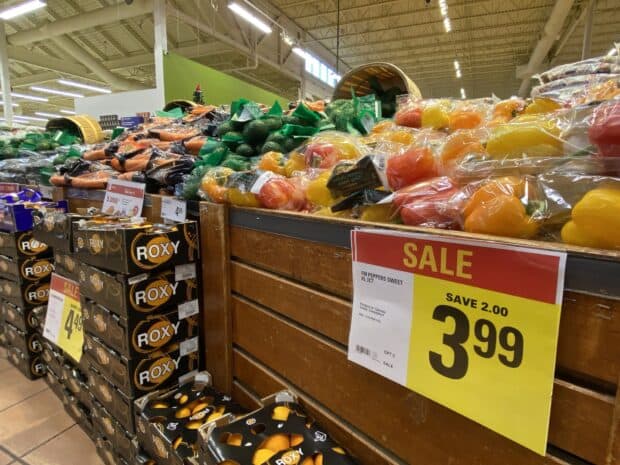Many have dealt with the rise of inflation one way or the other over the last couple of years, but for students in universities and colleges, the increase in the cost of living has really hit home.
This is because groceries, fresh produce in particular, have been hit the hardest during this economically volatile time.
According to data posted by Statistics Canada in October, fresh vegetables saw the highest year-over-year inflation rate, reaching an increase of 18.4 per cent.
Fresh fruit also faced similar increases, albeit a bit less drastic, at an increase of 9.4 per cent . This is a considerable drop from a staggering 17.6 per cent inflation rate, according to a Statistics Canada report in May 2023.
But don’t let that drop fool you. Fresh produce is still being priced at drastically higher levels than just a few years ago.
This comes at a time when students are facing high levels of food insecurity, as 22.1 per cent of individuals between the ages of 16 and 24 are facing food insecurity, according to a Stats Canada report from Nov. 14, 2023.
The City of Ottawa’s Public Health Department also states that “food insecurity continues to persist in Ottawa. One in eight households in Ottawa are food insecure.”
Purchasing quality fresh produce, which is necessary to live a healthy lifestyle, has become increasingly difficult for students and young adults.
So what’s the answer?
Ahmed Elbadri, a student success specialist at Algonquin College, believes the key to budgeting is about prioritizing what you do and don’t need.
“There is a difference between needs and wants and it’s important to identify that for yourself,” Elbadri said.
Elbadri also believes that looking out for sales on items you need would also be helpful.

“Always keep a look out for deals and check all the flyers,” Elbadri said.
Aidan Wilkens, a first-year architectural technician student at Algonquin College, lives in the basement of his parent’s home, pays rent and buys his own groceries. He’s learned that buying produce at large quantity stores like Costco gives you better value overall.
“Costco is usually my go-to, they have a large quantity and their prices are generally reasonable. I usually avoid places like Independent or other smaller grocery stores because they really have upped their prices recently,” Wilkens said.

Wilkens also acknowledges that due to increased produce prices, the items he purchases while out shopping for groceries have changed.
“It’s definitely something that I’m conscious about now,” Wilkens said. “[When] buying something like meat, I will either opt to not buy that or choose to buy a smaller package than I normally would.”
As meat is expensive, he’ll focus on buying something like rice or less expensive products.
Another way students could save on fresh produce is by visiting the reduced items rack, that most large grocery stores have.

These discount racks consist of fresh produce, often nearly half off, that are near expiry.
Although the produce won’t last as long as the items on the regular shelves, it’s a better bang for your buck if you’re pinching pennies, so it’s a great way to buy fresh and healthy produce at an affordable price.
Plus, according to Elbadri, there are ways to lengthen the expiry date of the produce.
“At times buying fresh and freezing it would be cost-effective and, most importantly, it’ll last,” Elbadri added.
While these methods will help students save some cash on fresh produce, that doesn’t necessarily mean the struggle is over. Wilkens has noticed his friends and fellow colleagues going out to eat far less, and he thinks it’s because of the cost of living these days.
“People who are living on their own, I never really see them go out to eat,” Wilkens said. “It’s about getting and prioritizing what you need, not what you want.”


